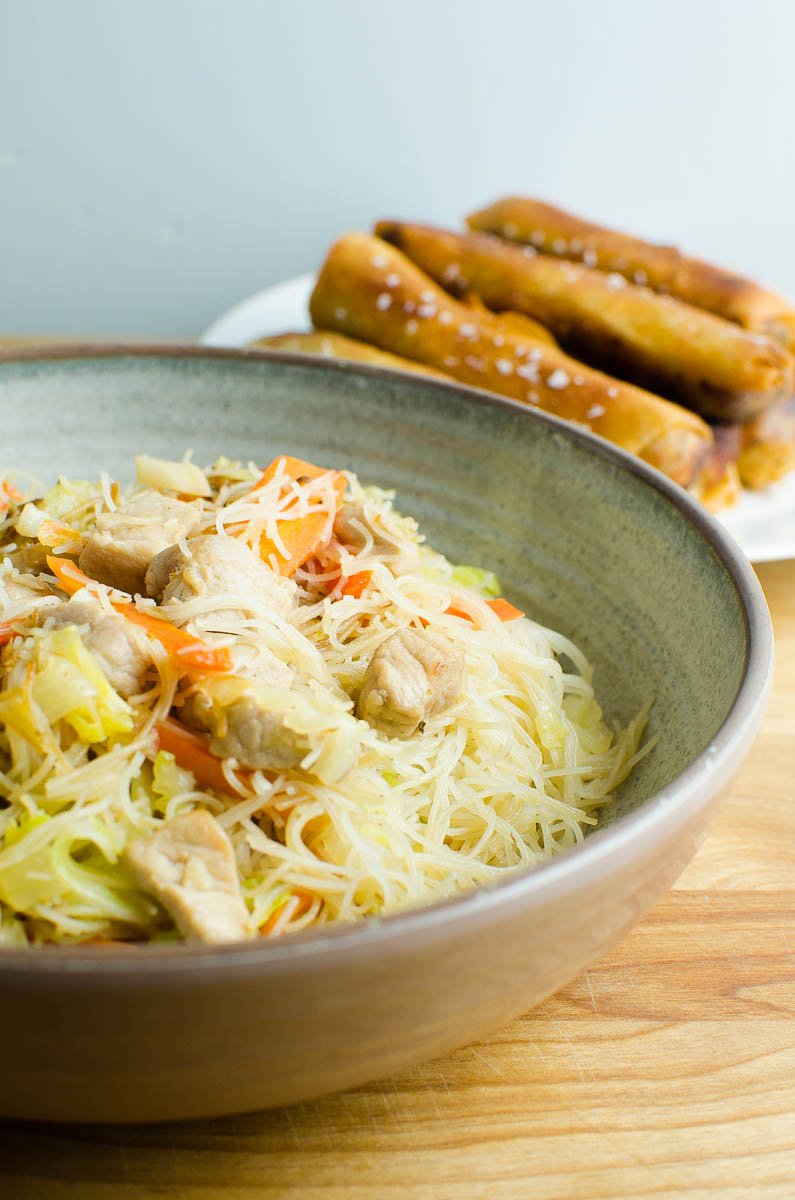Discover Delicious Filipino Food Recipes for every single Event
Filipino cuisine is a rich tapestry of flavors and customs, providing an excellent option of dishes appropriate for any type of event. As we check out these culinary treasures, one might wonder which meals truly embody the significance of Filipino hospitality and flavor.
Typical Filipino Dishes
Standard Filipino recipes show the rich cultural heritage and diverse impacts that have actually shaped the Philippines over centuries. These cooking creations are not simply nourishment yet symbolize the history, practices, and worths of the Filipino individuals (Filipino food recipes). Influences from indigenous techniques, as well as Spanish, Chinese, and American culinary traditions, assemble to develop a vivid palette of tastes
Essential dishes such as adobo, sinigang, and lechon display the balance of sweet, sour, and full-flavored aspects particular of Filipino food. Adobo, usually related to as the informal national dish, features marinaded meat slow-cooked in vinegar, soy sauce, and flavors, providing an alluring blend of tastes.
Additionally, regional variations add depth to traditional recipes, permitting for an abundant tapestry of cooking methods. Each dish narrates, promoting links among families and communities, inevitably enhancing the Filipino social identity through shared culinary experiences.
Quick and Easy Recipes

One preferred option is "Tortang Talong," an eggplant omelet that requires just a few components. Just grill and mash the eggplant, mix it with defeated eggs, and pan-fry until gold brownish. One more very easy meal is "Sinigang sa Miso," a fascinating sour soup that can be prepared in under thirty minutes by simmering fish or meat with miso paste, tomatoes, and various veggies.
For a fast side, take into consideration "Garlic Fried Rice" or "Sinangag," which transforms leftover rice into a tasty enhancement by sautéing it with garlic and oil. By using these quick recipes, you can appreciate the abundant and diverse flavors of Filipino cuisine while suiting an active way of living. These dishes not only satisfy desires yet also bring a preference of home to your table, making them suitable for any occasion.

Festive Party Favorites
Celebrations in Filipino culture are frequently noted by a dynamic range of meals that show the country's abundant heritage and culinary diversity. Festive celebrations, such as birthday celebrations, wedding events, and holidays, include an excellent spread of conventional delicacies that not only tantalize the taste but additionally cultivate a feeling of area and togetherness.
Amongst one of the most precious cheery faves is lechon, a whole roasted pig recognized for its crunchy skin and succulent meat, frequently acted as the centerpiece of any grand celebration. Another staple is pancit, a noodle dish symbolizing lengthy life and success, which is available in many local variants like pancit canton and pancit bihon.
For wonderful deals with, bibingka-- a rice cake commonly made with coconut milk and topped with salty eggs-- is an essential during Christmas celebrations, while leche flan, an abundant caramel custard, works as a preferred treat at different celebrations. Filipino food recipes.
Lastly, no Filipino feast is complete without lumpia-- crispy springtime rolls loaded with a blend of vegetables and meat. These meals, steeped in practice, not just satisfy the taste however additionally reinforce social bonds, making every event memorable.
Home Cooking Classics
While many dishes in Filipino food are connected with cheery events, comfort food standards provide a warm welcome that evokes sensations of fond memories and home. These beloved meals usually reflect the rich social heritage of the Philippines, blending flavors and structures that reverberate with generations.
One quintessential home cooking is Sinigang, a sour tamarind soup, commonly made with pork or shrimp and a selection of vegetables. Its cozy, appetizing brew supplies relief on rainy days, making it a staple in many homes. Another preferred is Adobo, a savory stew of meat marinated in soy sauce, vinegar, and flavors, simmered to perfection. Each household may here are the findings have its own twist, however the essence stays the exact same-- convenience in every bite.
Lumpiang Shanghai, crunchy spring rolls filled up with ground pork and vegetables, are frequently served at gatherings and enjoyed as a treat. Arroz Caldo-- a comforting rice porridge enriched with ginger and covered with fried garlic-- offers heat and nutrition, specifically during illness.
These convenience food standards not only please food cravings however also act as a pointer of the love and care infused right into every home-cooked meal.
Sweet Treats and Desserts
Filipino food provides a fascinating array of sweet deals with and desserts that astound the taste buds and reflect the country's vibrant culinary society. Among the most renowned is Leche Flan, an abundant custard dessert made with eggs, condensed milk, and caramelized sugar, giving a velvety structure and sweet flavor that is irresistible. Bibingka, a rice cake generally enjoyed throughout the Christmas period, is made from rice flour, coconut milk, and sugar, commonly topped with salted eggs and cheese, producing a savory-sweet equilibrium.
Another preferred dessert is Halo-Halo, a revitalizing concoction Learn More Here of smashed ice, sweetened fruits, jellies, and beans, covered with leche flan and ube ice lotion, making it a perfect treat for cozy weather. Turon, or caramelized banana springtime rolls, combines ripe bananas and jackfruit covered in a crunchy shell, supplying a wonderful crunch.
Finally, Puto, steamed rice cakes often delighted in as a treat or side dish, been available in different tastes and shades. These desserts not only display the varied ingredients offered in the Philippines however additionally highlight the rich customs and parties that accompany them, making each attack a sweet experience.
Final Thought
Finally, the exploration of Filipino cuisine reveals a rich tapestry of tastes and practices that accommodate diverse events. From standard meals to fast recipes, each offering shows the social heritage and cooking creative thinking of the Philippines. Celebratory favorites and reassuring classics better boost the eating experience, while sweet treats offer a gratifying final click reference thought to any dish. Welcoming these dishes fosters gratitude for the dynamic food culture, inviting enjoyment and connection through shared culinary experiences.